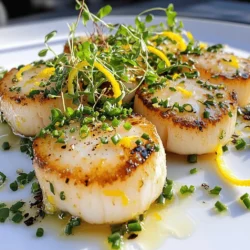
Gordon Ramsay’s Pan-Seared Scallops
Indulge in the flavors of the sea with these Sizzling Citrus Scallops with Herb Butter! This quick and easy recipe showcases perfectly seared scallops infused with garlic and fresh lemon zest, making it a delightful treat for any occasion. Ready in just 20 minutes, it's perfect for a romantic dinner or a special gathering.